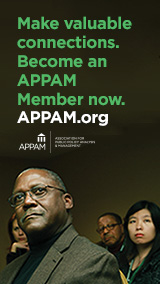Panel Paper:
Design and Implementation of the Family Options Study
*Names in bold indicate Presenter
This paper will review the design of the Family Options Study, the questions addressed in the long-term impact analysis, characteristics of the homeless families examined, participation in various housing interventions, and lessons from study implementation. Families participating in the Family Options Study were highly vulnerable. Their histories and characteristics at enrollment indicated significant levels of housing instability, weak work histories, and disabilities affecting both parents and children. At enrollment, well over half (63 percent) of family heads reported that this was not their first episode of homelessness and 16 percent said they had experienced homelessness as a child. Most family heads (83 percent) were not working at intake and more than half had not worked for pay in the previous six months. The median annual household income of all families in the study was $7,410 at baseline and most families were receiving some form of public assistance. Approximately 22 percent of adult respondents gave survey responses that indicated symptoms of post‑traumatic stress disorder (PTSD), and 22 percent reported symptoms of serious psychological distress. Almost half of adult respondents said they had experienced intimate partner violence as an adult.
The implementation of the random assignment and patterns in intervention take-up provide lessons about the assistance available to families who enter emergency shelter. The study found that homeless assistance programs in the study communities imposed eligibility criteria that hampered their ability to serve families in shelter who needed the assistance. Even when programs had space available, the programs often screened out families in shelter due to eligibility criteria such as insufficient income, substance abuse, criminal histories, and other factors that presumably contributed to the families’ homelessness. Moreover, families that are homeless do not always pursue the programs offered to them













